Interior designers are the new Instagram influencers – here’s how to be one
What is it like to live in a home followed by thousands of people? Ronda Kaysen meets the influencers whose living rooms are always ready for their close-up
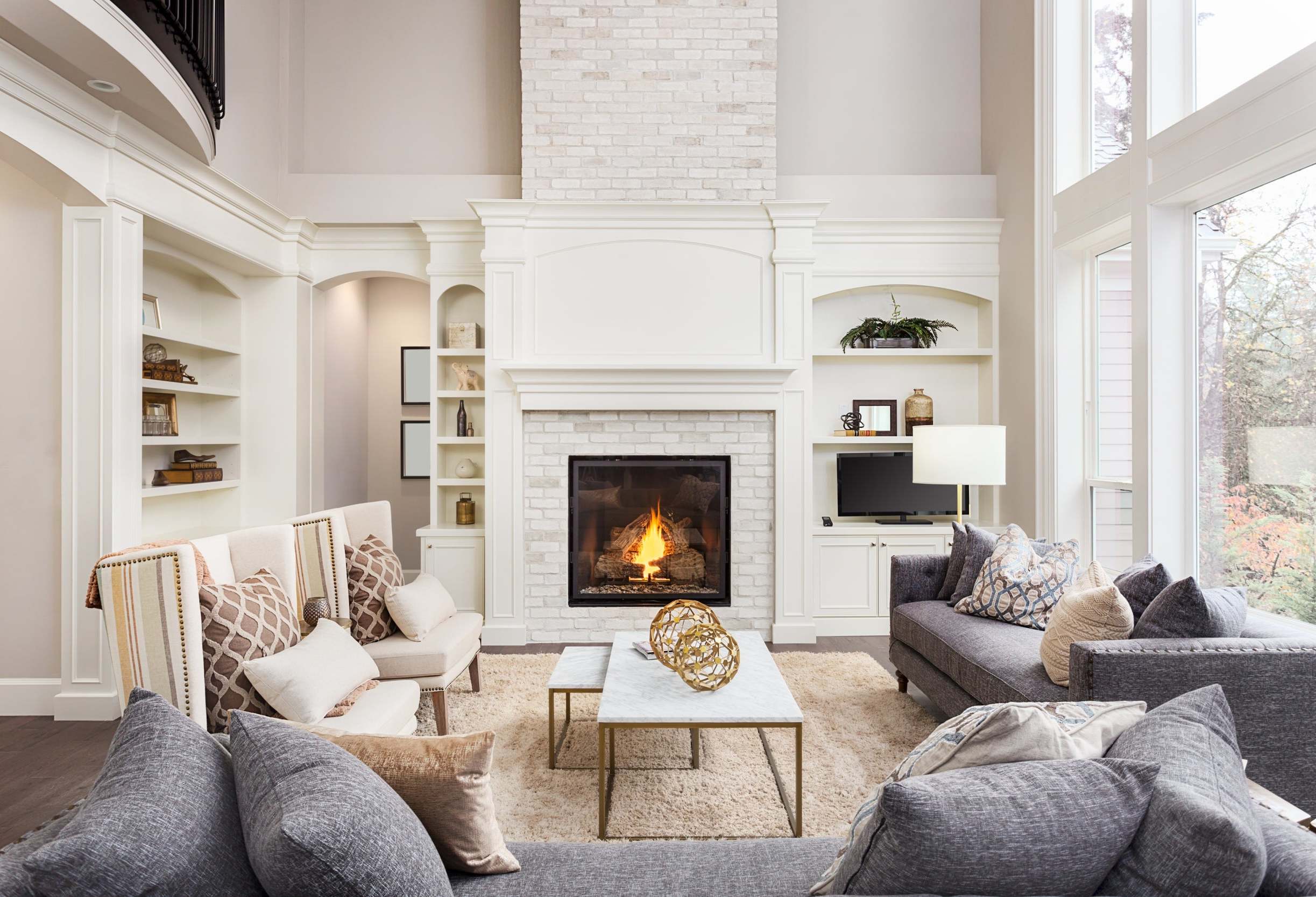
Your support helps us to tell the story
From reproductive rights to climate change to Big Tech, The Independent is on the ground when the story is developing. Whether it's investigating the financials of Elon Musk's pro-Trump PAC or producing our latest documentary, 'The A Word', which shines a light on the American women fighting for reproductive rights, we know how important it is to parse out the facts from the messaging.
At such a critical moment in US history, we need reporters on the ground. Your donation allows us to keep sending journalists to speak to both sides of the story.
The Independent is trusted by Americans across the entire political spectrum. And unlike many other quality news outlets, we choose not to lock Americans out of our reporting and analysis with paywalls. We believe quality journalism should be available to everyone, paid for by those who can afford it.
Your support makes all the difference.Erin Vogelpohl has tried mixing darker blues and greens into the decor of her five-bedroom house in Dallas, but they don’t play well with her 447,000 Instagram followers. So she sticks with a soft blush palette, the millennial pink that is ubiquitous on Instagram, and in her living room.
For home-decor Instagram influencers like Vogelpohl, the house is the star. And tending to a star can be an all-consuming job, particularly when you live in it.
Her account, @mytexashouse, and others like it have amassed tens of thousands of followers by cycling seemingly endless photographs of private living rooms, dining rooms, kitchens and bedrooms. Some have gained traction chronicling the restoration of an old home or the construction of a new one. A few dabble in areas like fashion, parenting, cooking and makeup, but they primarily peddle the infinite marketability of a home’s interior, with all its trappings.
Hardwood floors glisten. Kitchens, with marble countertops, are invariably white. Light floods the rooms from every angle. A throw blanket is tossed on a bed, with a plush duvet and a half dozen pillows. Other focal points might include a selection of shoes or camisoles casually displayed on a tufted fabric bench, almost begging to be bought.
Attract enough followers eager to see shots of a dining room centrepiece with fresh-cut summer flowers, and brands like Nordstrom, Pottery Barn, Wayfair and the Container Store will pay for access, offering the potential of a six-figure salary and plenty of free merchandise. Those who run successful accounts generally describe their rise as accidental, born from a mix of luck (a nod from the Better Homes & Gardens Instagram account with its 1.8 million followers helps) and a passion for their homes. Some had successful blogs with loyal readerships that followed them to social media.
But there is a price to pay for internet fame derived from your home. The space where you raise your children, kick off your shoes and go to bed lives online, more as a professional showroom than as private living quarters. Consider buying a new sofa or accent chair, and you may pause to wonder how well the piece will photograph. Spill a protein shake on the kitchen runner, and the aftermath becomes an Instagram stories tutorial on how to extricate chocolate from a rug.
“The house does feel a little less like my own because so many people know it. So many people have seen inside every space,” says Vogelpohl, 41, who lives there with her husband and three children. “I don’t want to entertain because it’s my workspace – literally, the whole thing.”
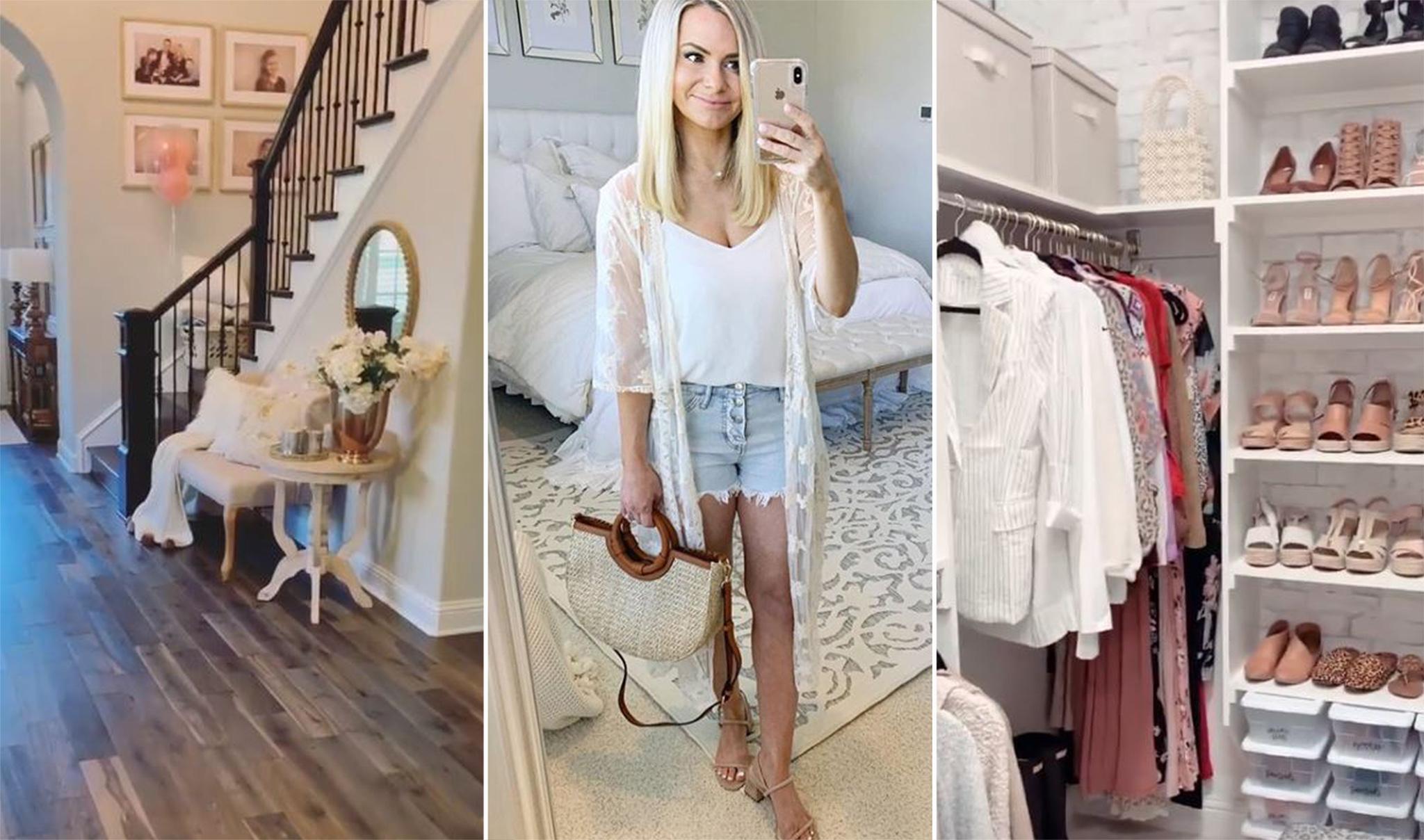
It takes work to keep a house looking both novel and spotless. How many pictures of the same family room can you post before a follower moves on to something new?
Before Leslie Saeta turned her six-bedroom house in South Pasadena, California, into an Instagram destination, she had two boxes of Christmas decorations. Now she has 17. And how could she not? The 239,000 followers of @my100yearoldhome expect to see her bannister wrapped in garlands and wreaths hung from every window by early December.
To keep the 104,000 followers of @ninawilliamsblog intrigued, Nina Williams, 36, frequently changed the decor of the six-bedroom house in West Des Moines, Iowa, where she and her family lived until they sold it in May. Now she is enjoying a temporary reprieve, as the family lives in a rental nearby, while they build a 7,000-square-foot house on 40 acres. As that project is the current focus of her Instagram account, she can enjoy a few months of living outside the internet fishbowl, and indulge in decorating sins like covering the refrigerator with magnets and her children’s drawings.
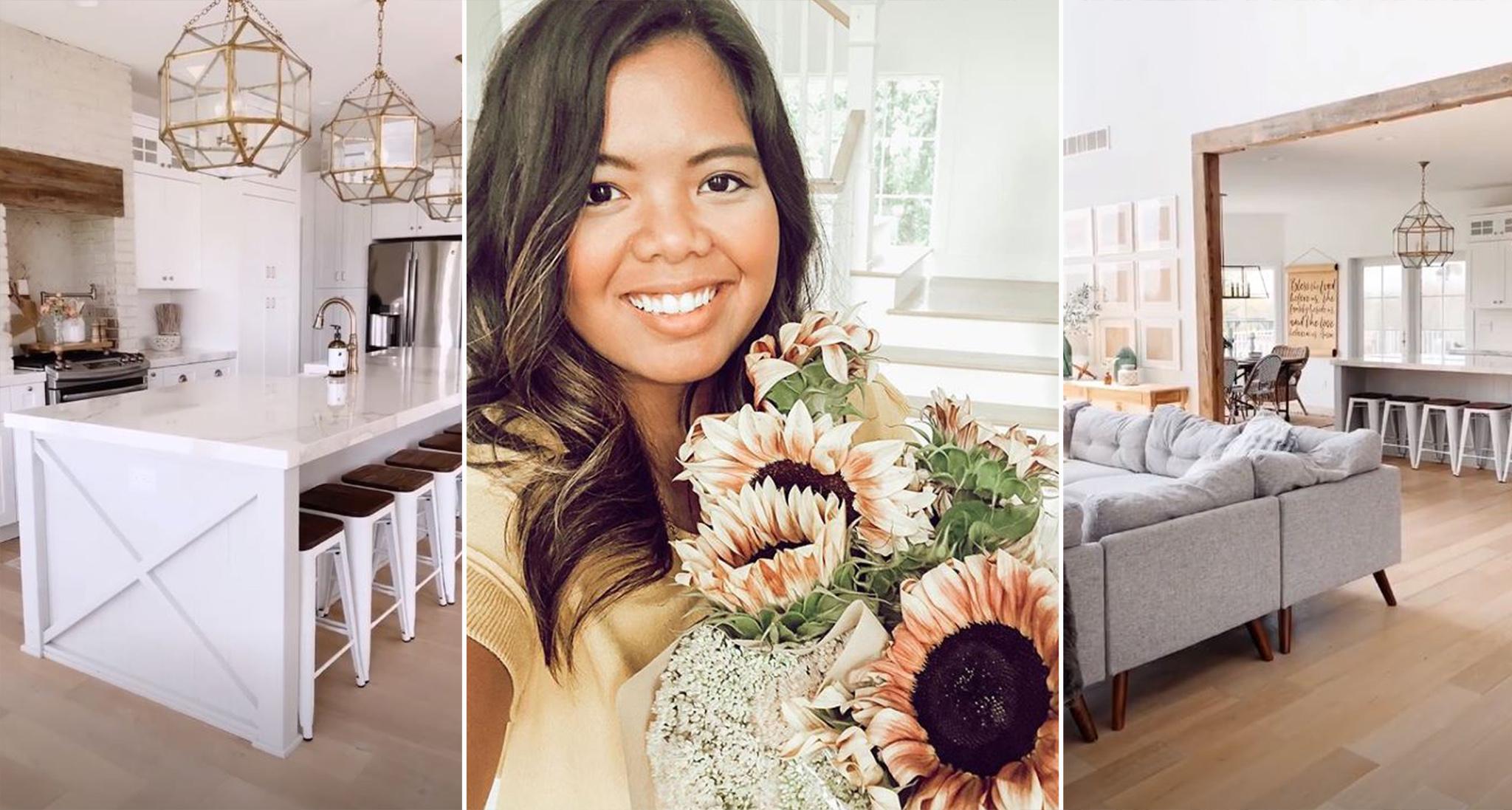
To operate a successful account can be a full-time job of creating content, responding to comments and coordinating with brands. Saeta, 60, dedicates 60 hours a week to tending her account and blog, which she describes as a “small media company”. Williams, a stay-at-home mother with four children, spends two to three hours a day on her account and blog, earning about half as much as she estimates she might if she worked on it fulltime.
There is “labour that goes into keeping a family home in show-home condition”, says Kim Barbour, a lecturer in media at the University of Adelaide in Australia, who has studied the influence of Instagram on home life. “I imagine there would be times when the pressure to maintain the glossy-magazine styling becomes a real burden.”
It might be summer vacation for Erin Rollins’ three children, but the 208,000 followers of @erin_sunnysideup, the account she runs along with a blog, expect to see regular posts about the five-bedroom house that she and her husband, Ken Rollins, 43, a corporate lawyer, built in San Diego.
All summer, the children have been hanging out in the room above the garage that Rollins, 42, spent the last year transforming into a family theatre. In mid-July, with her design work finally complete, she temporarily evicted them from their lounge space so she could stage and photograph it for the big reveal that she plans to share online in the next few weeks. The children protested, but complied. “I’ve been blogging and taking pictures of us living in our home for over 10 years, so my kids aren’t fazed,” she says.
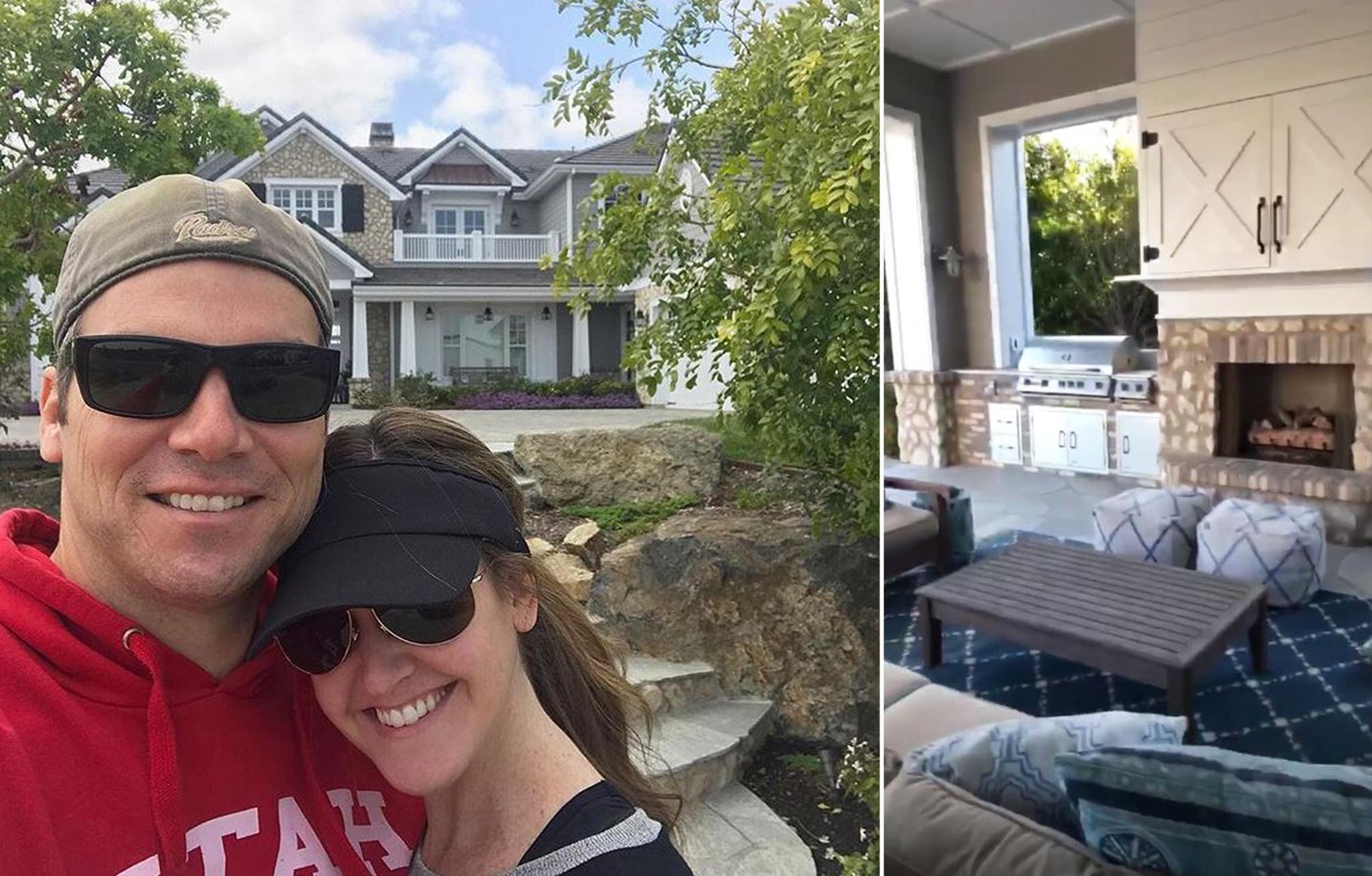
Generally, Rollins stages and photographs the spaces when the children are out of the house, which is easier now that all three are school age. “When they get home, the house is messy,” she says.
The interiors of other people’s homes have long captured the public imagination. In the 1980s, viewers followed Robin Leach around on Lifestyles of the Rich and Famous for a glimpse inside the opulent homes of wealthy people who were often not that famous. In the 2000s, a generation of celebrities (and eventual Instagram influencers) was born on shows like Keeping Up with the Kardashians and the Real Housewives franchise. And home improvement shows on HGTV and other networks now offer viewers uninterrupted access to the unremarkable homes and lives of ordinary people.
Free platforms like Instagram make it possible for anyone to show the world her living room, and potentially profit from it by promoting products. Companies like rewardStyle connect popular influencers with brands. When an influencer uploads a photograph of, say, a fabulous lamp tagged with a link, followers who click on the link can buy the merchandise. The influencer then collects a commission on sales that originate from that post.
Brands also partner with influencers directly or through marketing companies, paying for sponsored content. (Influencers with smaller followings may receive free merchandise instead.) While earnings vary widely in an industry that is still developing, an influencer can expect to earn roughly one cent for each follower, or $1,000 a post for an account with 100,000 followers, according to Later, an Instagram marketing platform. Influencers with audiences of 50,000 to 500,000 reported earning an average of about $70,000 a year, with more than half of their income from sponsored content, according to a 2019 survey by Collectively, an influencer marketing company.
When you get on Instagram and you’re trying to take a break from your real, tough life, you don’t want to see your own stuff; you want to see the dream of an idealised home
“In the very beginning, people would contact me: ‘Can we send you something?’ And I was like, ‘Oh my gosh, send me all the free stuff!’” Williams says.
It didn’t take long for her to learn that she was worth more than a free duvet cover. “Now, if you want to send me stuff,” she says, “there is a price.”
Deliver impressive enough results, and a brand may roll out signature merchandise, like Vogelpohl’s line of rugs from Orian.
Much of an account’s success depends on the enthusiasm of its followers. To keep them engaged, an account must feel authentic, and that means sharing more than just your new decorative mirror. Followers will drift off and brands will doubt your marketing potential if few people like or comment on bland photographs with banal captions peppered with rainbow emojis and a string of advertising hashtags and links.
To avoid that fate, an account needs to share a certain number of personal anecdotes, complete with photos of the children and the clutter. But not too much clutter, because no one wants to see a real-life mess, even if it comes with a deal on a Swiffer.
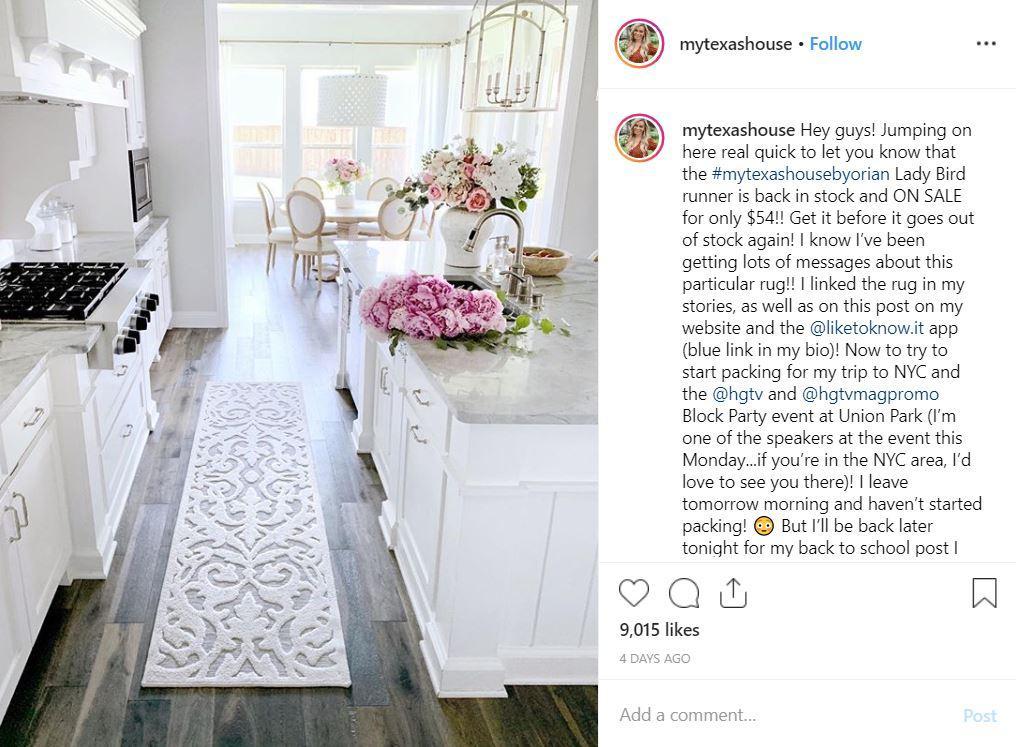
“When you get on Instagram and you’re trying to take a break from your real, tough life – maybe it’s because your kid has been asking for something to eat every 30 seconds – you don’t want to see your own stuff; you want to see the dream” of an idealised home, says Allison Schaeffer, 44, who lives in San Diego and follows dozens of personal home-decor accounts. “It’s just relatable enough and just out of reach enough.”
Of course, there is a risk to sharing your home life with half a million or so strangers. About 18 months ago, Vogelpohl posted about her family’s struggles: her husband, Dusty Vogelpohl, 41, a lawyer, lost his job around the same time that Erin Vogelpohl had heart surgery.
While many followers expressed sympathy, others questioned her honesty and motives. Some doubted the seriousness of the family’s financial problems, given the well-appointed, 4,800-square-foot house and lavish trips like a cruise in Mexico, or wondered if she was sharing her difficult experiences to attract more followers. In a teary Instagram story, Erin Vogelpohl challenged the doubters, pointing out that if it weren’t for her successful Instagram account, the family would not have been able to weather the financial setback.
“If I hadn’t done the Instagram thing, we would have had to have sold the house, because we wouldn’t have been able to afford it,” Erin Vogelpohl, now the sole breadwinner in the family, says in a telephone interview. “The house has kept me in the house.”
But not everyone with a sizeable following is comfortable with all the public interest.
In 2017, Ashley Harrison, a stay-at-home mother with four children, turned her Instagram account, @ourvictorianitalianate, into a journal to keep in touch with friends and family after she and her husband, Nathan Harrison, who works in insurance, moved into an 1858 house in St Louis and began restoring it.

It never occurred to her that complete strangers would be interested in photos of her house being fixed up. But soon she had 200 followers, most of whom she didn’t know. Now, with more than 35,000 followers, she is baffled by the attention.
“When it first started happening, I was like, ‘OK, this is strange, who is this lady?’ Once I hit 500 followers, I was like, ‘This is just bizarre,’” says Harrison, 36. “It is a little bit unsettling to think that there are nearly 40,000 strangers who could come and knock on my door.”
Her account has documented the extensive renovation of her Victorian house, which was vacant before she and her husband bought it and expanded it to 6,800 square feet. They added a new kitchen, a mudroom, a three-car detached garage and a porte-cochere. They also turned an outbuilding into a pool house and added an in-ground pool this summer. “I think people like a comeback story,” she says of the account’s popularity.
Followers have asked for floor plans and for video tours of the upstairs bedrooms, which Harrison declined to share, concerned that strangers would know where her children slept. Like many with popular accounts, she has been asked to give private tours of her property. (She refused.) Others say fans have driven past their homes and greeted them in the supermarket or at restaurants.
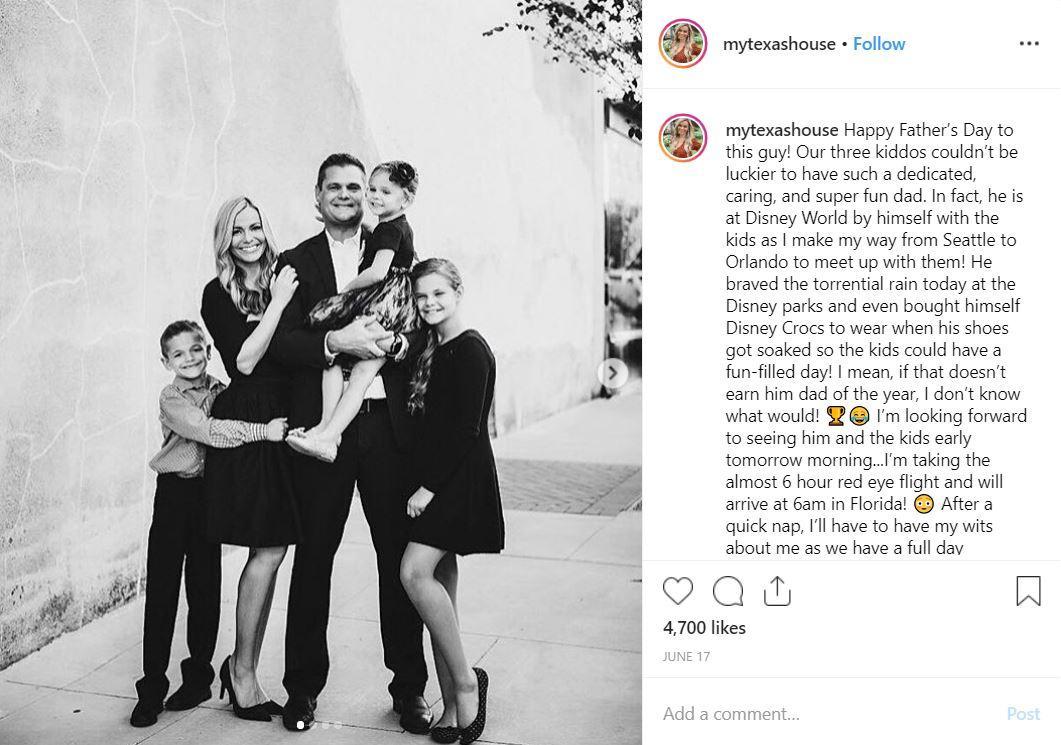
Marketers have come knocking, too, offering Harrison opportunities to promote merchandise. While she accepts some opportunities, she has turned down many, reluctant to promote products she wouldn’t typically buy. “If this becomes something that’s not authentic, then I don’t think it’s going to be something that brings me joy,” she says. “Who can go and redo a room every month?”
Regardless of how photogenic a house might be, family members living there may not be entirely comfortable in front of the camera. Rollins’ 15-year-old daughter no longer wants to be included in photos, she says, partly because her friends follow the account.
Vogelpohl’s oldest daughter, who is 13 and starting high school this year, would also prefer to remain offline. “It’s embarrassing to her,” Vogelpohl says. “She doesn’t want the boys to see her room.”
Even spouses bristle.
Saeta’s husband, Dave Saeta, 59, who works in commercial real estate, complains that she spends too much time on the phone, and that he has had to surrender part of the 4,700-square-foot house to the business of her Instagram account. The third floor was a game-and-guest room until it became a storage-and-staging area for merchandise Saeta acquires.
But Dave Saeta says he ultimately trusts her to make the most of their stately house, which has long been a favourite of location scouts, appearing on television shows like Mad Men and Judging Amy.
In a way, Instagram is a natural next stage in the evolution of a house that was already in the public eye.
“It’s not like I’m pimping my house,” Leslie Saeta says. “It’s more that we’ve created this wonderful place and I want to share it. And I can share it from a distance, but still let people in.”
© New York Times
Join our commenting forum
Join thought-provoking conversations, follow other Independent readers and see their replies
Comments